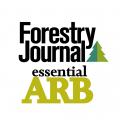
Dear editor,
I was interested to read the piece about the public ignoring warning signs (FJ Newsletter) and the comment about needing to take down old signs that were no longer relevant.
Some years ago I acted as the secretariat to the England and Wales Wildfire Forum. We commissioned a study by Nottingham Trent University Psychology Department into the types of messages that needed to be given out to discourage people starting wildfires, either through carelessness or deliberately.
One of the findings of this study was that people had become ‘immune’ to warning signs, as they saw so many in daily life, so many of which were out of date or no longer relevant, that they assumed they all were.
READ MORE: Foresters react to the public ignoring warning signs
Near me is a field I walk through most mornings with a permanent sign on the stile that says, ‘Sheep in field, all dogs on lead’, even though sheep will only be in that field for a few weeks every year. All the regular walkers have got used to there being no sheep so don’t bother to put their dogs on a lead. And I wonder how many of your readers will drive past a ‘Road Closed Ahead’ sign, whilst subconsciously thinking, ‘I bet it’s not’.
So yes, put up signs, but just as importantly, take them down when you’re finished.
Regards,
Martin Glynn, FICFor CEnv
Dear editor,
I was most interested to read the article headlined ‘Timber traceability will combat illegal logging and deforestation’ in Forestry Journal, June 2023.
I think that I am right to say that there is no ‘illegal logging and deforestation’ going on in the UK.
We are a fully paid-up member of FSC and keep all of our most detailed records to comply with their strict requirements.
Furthermore, we have just paid over £1,200 plus VAT for our annual audit ... for what? I can’t recall any of our wide range of customers saying, ‘If you aren’t FSC registered, we won’t buy from you!’ More often, ‘What’s your price?’
READ MORE: Dominic von Trotha Taylor: Here is how we can combat illegal logging
Although there is no illegal logging taking place in the UK, what about the effects of the removal of diseased ash, spruce and larch trees? Despite the suggestion of increased tree planting, I suspect the net number of trees successfully growing in the UK is either static or reducing.
Will or could iOV42 replace FSC? Worth thinking about.
Regards,
Andy Chalmers
Melcourt Industries,
Gloucestershire
P.S. In the likely event of a change in UK government next year, I would like to know what the other political parties are saying. Oh no ... no more planting outbidding please.
Dear editor,
What does UK tree planting have in common with West Indian limbo dancing? Both strive for the lowest bar possible. Sound far-fetched? Then read the news in Forestry Journal, June 2023. A community group called 9Trees plans to plant nine native trees in every county of the United Kingdom, “to create a strong increase in biodiversity”. The mind boggles.
In the spirit of cooperation, here are native tree and site suggestions for my home county of Hertfordshire and to make sure ‘the right tree is in the right place’ (I have been dying to use that cliché).
Fast-growing common beech in Stevenage Leisure Park for racing driver Lewis Hamilton, the town’s favourite, super-sonic son.
Hornbeam that burns as hot as Welsh anthracite. Plant a tree outside Watford Junction station for the whizz-kid from Watford whose red-hot financial trading brought down a bank.
A Celtic maple (sycamore) for Parkfield Park in Potters Bar to replace a healthy veteran sycamore felled by council knuckle-heads who don’t seem to like the species.
An English elm outside the preserved remains of the old shredded wheat factory in Welwyn Garden City. Factory and elm tree now redundant from original purpose.
Common elder planted at Maple Cross on the banks of the River Colne, which recently received a discharge of sewage. Common elder thrives in high-nitrogen soils.
Two trees for Salisbury Hall at London Colney near St Albans. A ‘Royal’ English oak for its close connection with King Charles II and ‘naughty’ Nell Gwyn. And silver birch because the Mosquito bomber was designed there. Three-ply birch wood was used to make the all-wood World War II aircraft.
Mountain ash at the highest point in Hertfordshire, in Pavis Wood at Hastoe near Tring, coming in at the heady height of 244 metres above sea level.
A common hazel in my garden at Potters Bar to keep the grey squirrels well fed.
Regards,
Dr Terry Mabbett



Comments: Our rules
We want our comments to be a lively and valuable part of our community - a place where readers can debate and engage with the most important local issues. The ability to comment on our stories is a privilege, not a right, however, and that privilege may be withdrawn if it is abused or misused.
Please report any comments that break our rules.
Read the rules here